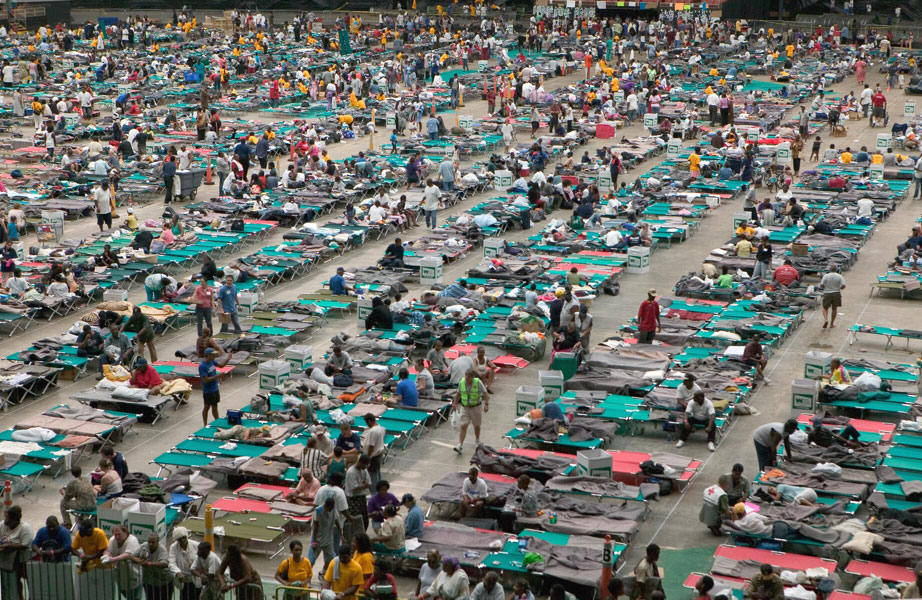Definition of Social Work
May 11, 2021 | By
Social work combines psychology, community engagement, and practical knowledge of social services to assist people and communities in need meet basic needs and achieve happiness and independence.
That’s our best shot at a one-line definition. But we’re the first to admit that most quick definitions are kind of a cop-out. Even Webster’s didn’t really nail it:
“ … various professional activities or methods concretely concerned with providing social services and especially with the investigation, treatment, and material aid of the economically, physically, mentally, or socially disadvantaged.” ~ Merriam-Webster
What does that tell you about the actual work that goes into a social worker’s day?
What is Social Work?
The Different Kinds of Social Work
Is There a Legal Social Work Definition?
Social Work Means Shaping Social Change
The Challenges That Define Social Work Today
Social Work Definitions of The Future
What is Social Work?
The International Federation of Social Workers took their own stab at a social work definition a handful of years ago:
“Social work is a practice-based profession and an academic discipline that promotes social change and development, social cohesion, and the empowerment and liberation of people. Principles of social justice, human rights, collective responsibility and respect for diversities are central to social work. Underpinned by theories of social work, social sciences, humanities and indigenous knowledge, social work engages people and structures to address life challenges and enhance wellbeing. The above definition may be amplified at national and/or regional levels.” ~ IFSW
The broad definition of social work implies that it’s a big field. But other than splashing the word “social” around a lot, how is it distinguished from, or tied to, the other fields of human services that work toward those same ends?
You have to dig through a bit of history to get to a working definition of social work.
All of this has to start with figuring out what social work is. While it is a kind of human service, it’s one that deals with a particular question: the social question.
This was how it was defined by Monsignor John A. Ryan and the Reverend Raymond McGowan in 1921 in A Catechism of the Social Question:
“A social question is one that concerns society, or a social group. The social question means certain evils and grievances affecting the wage-earning classes, and calling for removal or remedy.”
Even way back then, that wasn’t a new question. The story of humanity has always been largely about the haves and the have-nots. But even today, 100 years later, society still hasn’t found a definitive answer to the social question. That means more work is needed.
That work is what is called social work… investigating, assisting and relieving the problems of those who are struggling.
It’s work that happens at every level of society. Social workers go door to door in the wake of disasters to assist survivors – from the floods of Hurricane Katrina in ’05 to the California wildfires of 2020, social workers were there. They staff drug rehab centers, counseling addicts at their most desperate. They lobby the government for funding and to change laws to reduce discrimination and further the cause of social justice. They arrange for home health services for the elderly and indigent who can’t cope by themselves.
It All Started in NYC At the Dawn of the Industrial Age
 Modern social work grew out of volunteer charitable efforts funded by philanthropists and volunteer societies. The teeming masses of the poor and diseased brought together in urban centers by the pull of industrialization drew the empathy of individuals long before governments began to address the problems. These societies organized voluntary relief efforts among themselves and reached out to those in need through paid staff. Those first social workers were known as friendly visitors.
Modern social work grew out of volunteer charitable efforts funded by philanthropists and volunteer societies. The teeming masses of the poor and diseased brought together in urban centers by the pull of industrialization drew the empathy of individuals long before governments began to address the problems. These societies organized voluntary relief efforts among themselves and reached out to those in need through paid staff. Those first social workers were known as friendly visitors.
In 1898, the New York Charity Organization Society established the Summer School of Applied Philanthropy to help train such workers. That school still exists today as the Columbia University School of Social Work… one of the top programs in the country.
Funding was always a challenge. If you’ve ever dipped into the Community Chest in a game of Monopoly, you landed on a concept that came out of World War I for raising funds for the needy. But it took the wealth of the Roaring Twenties to get government funding for social services.
By 1930, social work had become a profession established enough to be recorded in the U.S. Census.
The major concerns of social work have shifted focus over the decades. But the Great Depression focused the work almost exclusively on poverty as millions became jobless. The wake of the Second World War and the return of thousands of mentally damaged veterans shifted the focus yet again, to the aspect of mental health. And the social upheavals of the 1960s moved many social workers to the causes of racial justice and equality.
Today, it’s a profession that takes on all those problems and more.
The social question connects individual deprivation and suffering to the good of the community. It’s a recognition that social ills harm even those who aren’t directly affected. It’s an acknowledgement that everyone bears a burden of responsibility for curing them. Social workers are the people who step up to take on the hard work of doing so.
The Different Kinds of Social Work
While all social workers have to develop similar skills and perform many of the same kinds of daily functions, there are different kinds of specialties you might pursue as a social worker. These will decide what kinds of problems you deal with day to day and what kind of clients you spend most of your time with.
NASW, the National Association of Social Workers, lists 10 different categories of specialization that they offer certifications for. Some of these overlap, like health care and hospice/palliative roles, while others can be sub-specialties within any field, like case management. But social workers can’t say “we don’t do that.” You can think of specializations as an area of interest for your work, not a limitation that holds back your ability to help.
- Leadership – Organizing and managing any big program is its own specialty area. That’s what leadership is about. Social worker leaders are found at the top of big government social services agencies and tiny neighborhood non-profits. They know the strings to pull and how to grease the bureaucratic skids. They also have the fire and passion to inspire staff and community to accomplish great things in social justice.
- Addictions – Addictions to drugs, alcohol, gambling, or any other vice are the gateway to every other kind of social ill. Social workers specializing in addiction have to be able to handle all types of consequence, from bankruptcy to serious health issues, all while managing the self-destructive behavior and counseling their clients out of the dark web of dependency.
- Case Management – Case management can come into play in any kind of social ill, but social worker case managers usually serve as high-level coordinators for clients with multiple issues or needs. They are experts at coordinating the scheduling and delivery of services from other providers, often including other social worker specialists.
- Clinical – Clinical social workers serve as personal counselors, often specializing also in another area like addiction or gerontology. They are qualified and expert in conducting assessment, diagnosis, and treatment on the individual level. They advocate for clients on an individual level but also deliver therapies directly.
- Education – Social workers who work in schools deal with some of the most vulnerable among our population and deal with some of the most sensitive situations. They may deal with bullying incidents and handle conflict mediation and assessment of students with learning disabilities. They also work at the community level, advocating for education and school intervention programs to support kids at every stage of learning.
- Gerontology – Gerontological social workers handle patients at the other end of the life spectrum, those whose age has lead to confusion and infirmity. This means they often cross over into health care and family counseling, as well as sorting through the complications that come with a long life… debts, family crises, and complex medical issues. Assisting those who have already contributed to society is a solemn duty for these social workers.
- Health Care – The American healthcare industry is famously complicated and expensive. Medical costs are the most common cause of bankruptcy for American families; a 2015 Kaiser Family Foundation survey found 25 percent of adults have difficulty paying medical bills and around 11 percent end up filing for bankruptcy. Sorting through the healthcare options and dealing with both the financial impact and the need for follow-up support are the hard jobs healthcare social workers take on. They often work for and in hospitals and long-term care facilities.
- Hospice & Palliative – Individuals and families facing end-of-life issues are both badly in need of support and in no mental state to face the challenges. Moreover, the rules and rituals of dying and settling affairs are unfamiliar to many. Social workers specialized in hospice and palliative care help patients adjust to their final days, and assist families in coping with the fallout of devastating losses.
- Youth and Family – Unlike school social workers, those specializing in children, youth, and family often work outside the education system. That could be in child protective services agencies, looking out directly for the interests of children under the protection of the state, or in counseling and family services non-profits working with at-risk youth. These social workers might provide counseling or mediation services to families. They have specialized training in child psychology and evaluation to deal with their charges.
- Military – Service members face unique challenges coming home from stressful deployments, and social workers tasked with assisting them and their families need special training and experience to help. Enlistees are more likely to come from lower socioeconomic backgrounds and to be minorities than the general population; they face all the same challenges in civilian life that those groups all do, with an extra helping of PTSD and often physical disability. Social workers specializing in military issues have to be able to handle it all.
Each of these practice areas expands the practical definitions of social work. The field spreads out through society, touching lives in every culture and socioeconomic group.
Is There a Legal Social Work Definition?
As a licensed and regulated profession, social work actually has fifty different definitions… one for every state that issues a license.
Because they have to stand up in a court of law, these social work definitions are quite specific. For the state of New York, for instance, the definitions of social work practice for clinical and master level social work run to almost 450 words.
It’s worth taking a look at how they put together their social work definitions to see how they line up with the actual use of the term.
Each definition of a social worker job duties in the code have four separate sections:
- An extensive list of the actual work practices of social workers like assessment, planning, and intervention, together with the types of disorders and conditions they deal with, and the social groups they work within.
- A description of some of the additional tasks that social workers might take on, like community advocacy, case management, and consultation.
- The supervision requirements that social workers can fill in the licensing context.
- The settings in which social workers can practice, and a reference to the additional regulations that the state might lay out in addition to the legal definition with respect to social worker duties and practices.
But if you look carefully, each of those definitions of social work is circular. The definition itself uses the words “social work” to describe it. That still leaves a gap, then, in figuring out what it is that really makes social work different from other human services.
States also recognize this, which is why their social worker definitions also include a long list of disclaimers about activities that social workers might perform that might also be performed by other professionals who don’t hold that license. The New York code has 14 different exceptions, ranging from community organizing for social services to client advocacy to making assessments and plans for intervention based on client needs.
Which is exactly what their social work definition includes in the first place. So it’s clear you have to go further in looking for real definitions of social work.
Social Work Means Shaping Social Change
Although social workers tend to focus on the individuals they assist, they also know that individual assistance only goes so far. Many of the ills that people suffer are systemic problems. The only lasting solutions must come through collective, societal change. That’s what puts the “social” in social work.
The emphasis on larger social change might be the one big thing that makes social work different from all the human services fields.
As big a difference as individual social workers can make, they have the greatest effect when they come together. That’s why NASW regularly puts together major policy briefings with recommendations to the federal government for ways to change social policy for the better. Their 2021 Blueprint of Federal Social Policy Priorities lays out a series of practical things that the government can do to support social work, such as:
- Supporting license portability for clinical social workers
- Passing student loan debt relief that will apply to social workers
- Improve universal testing and contact tracing systems for all diseases
- Expanding SNAP eligibility
- Increasing the national minimum wage
- Expanding addiction treatment resources
- Offering universal access to high-quality pre-kindergarten programs and universal school meals
- Reauthorizing the Violence Against Women Act
- Boost funding for elder-care and improve community-based services for older adults
- Expand the national Housing Trust Fund and promote equitable access to affordable housing opportunities
Definitions of social work that embrace the greater good are crucial to creating these changes. If you have paid any attention at all to the major policy goals for the current administration, you will notice that quite a few of them come straight off the NASW list. That’s what the support of 110,000 member social workers can do when it comes to getting the ball rolling for a better world.
The Challenges That Define Social Work Today
Trying to look at social work as a single kind of job or function is really looking at it the wrong way, though. Social workers, better than anyone, understand that no one has perfect control over the things that happen in life. Instead, they can only control how they react to those things. Those reactions are the things that define us. In the case of social work, how the profession handles those challenges may be the most accurate definition.
In a pretty big way, social work is actually defined by the social problems it tries to fix. Specific social ills might change over time – like how crack cocaine in the ‘80s and ‘90s gave way to the opioid epidemic of the past 20 years…. But the broader issues are always in play: poverty, discrimination, crime addiction.
Similarly, the state of poverty that faces the modern social worker is very different from the squalid, grating poverty that New Yorkers faced at the beginning of the industrial revolution. The details matter. Today’s challenges might get the same labels, but they are unique and they influence one another in unique ways.
COVID-19: The Once-in-a-Lifetime Social Work Challenge
 There is no way to talk about the challenges defining social work today without talking about the effects and after-effects of the COVID-19 pandemic. In the space of a year, the social fabric of the world was torn to bits. Social workers ended up confronting not just an entirely new set of social problems, but also disruptions in the very ways they usually work to overcome those problems.
There is no way to talk about the challenges defining social work today without talking about the effects and after-effects of the COVID-19 pandemic. In the space of a year, the social fabric of the world was torn to bits. Social workers ended up confronting not just an entirely new set of social problems, but also disruptions in the very ways they usually work to overcome those problems.
The pandemic created some entirely new problems, introducing mental health issues rising from stress and isolation, and putting a generation of schoolchildren at risk of falling behind due to missing school and bungled remote learning rollouts. In other cases, it just served to double-down on problems that we already faced, like disparate access to services and overburdened healthcare systems.
Cut off from working with clients face-to-face, social workers are still having trouble getting a handle on what the long-term effects of the pandemic will be. Even as they work to get low-income and vulnerable community members vaccinated, social workers are looking at an uncertain future. Will COVID variants lead to a return to lockdowns and a round of booster shots next winter? How will a generation of school kids emerging from lockdown handle a missing year of their lives? How prevalent will long-term mental health issues be after so much tragedy and isolation? No one really knows.
There are reasons to think some social benefits might come from the pandemic, too, though. Many political leaders have redoubled their efforts to properly fund social services. The $2 trillion American Jobs Plan infrastructure proposal includes $400 billion in funding to home care services and workers. And the innovation and flexibility that came along with social work’s response to social distancing restrictions may offer vastly improved outreach and access improvements to social services over the coming years. The NASW 2021 Policy Briefing, for example, calls on the federal government to make the emergency telehealth expansion provisions of the pandemic permanent.
The American Academy of Social Work and Social Welfare has created an initiative designed to provide definitions of social work that meet the current needs of society. They have identified three major challenges and ten goals within them:
- Individual and family well-being
- Ensure healthy development for youth – Prevent long-term illness and mental issues by getting help to kids before the damage is done, allowing them to grow into healthy and productive adults.

- Close the health gap – Healthcare outcomes for minority and low-income Americans historically lag the wealthier and healthier majority. Social strategies designed to improve care and end disparities in healthcare are key.
- Build healthy relationships to end violence – Systemic and interpersonal oppression and violence can be reduced with community and social systems to better connect people and reduce traumatic violence in all communities.
- Advance long and productive lives – As the population ages, social service demands go up and quality of life often diminishes. New ways of thinking about aging and social supports throughout the lifespan will lead to fuller, more productive lives and greater well-being.
- Stronger social fabric
- Eradicate social isolation – Social isolation didn’t begin with COVID-19. Social workers are pursuing more effective ways to deepen social connections and build community among people of all ages.
- End homelessness – More than 1.5 million Americans will find themselves homeless for some period of the average year, with terrible consequences to their health and mental wellness. Social workers aim to expand proven approaches to reduce homelessness in communities across the country.
- Create social responses to a changing environment – Climate change is already here and presents particular risks to marginalized communities. Social services has a role in helping society transform both in ways to limit the extent of global warming and to build a more resilient response to the effects it will bring.
- Harness technology for social good – New technologies can introduce new social problems, but they can also expand services and offer new opportunities for rapid and accurate interventions with hard-to-reach clients. Social workers are exploring new uses of technology to deliver services and improve lives.
- Just society
- Eliminate racism – Some challenges are bigger than others, and social workers have been dealing with racism for a very long time. Although it will likely continue to be a drag on the welfare of individuals and society, the institution of racism will continue to be fought by social workers across the country.
- Promote smart decarceration – With almost one out of every hundred citizens behind bars, the United States has one of the highest proportions of people behind bars in the world. By definition, any society with that many people locked up has serious social problems. In the endless loop of imprisonment and recidivism, social workers have committed to finding new ways to reduce the number of people in jail and provide more effective and just methods of rehabilitation.
- Build financial capability and assets for all – Almost half of all American households are financially insecure. That puts them mostly in the hands of the social safety net. Although social workers are happy to step up for those in need, they realize that reducing economic hardship and building lifelong savings and income generation through social policies offers a win for both those families and society as a whole.
- Reduce extreme economic inequality – At root of those financial insecurities is one inescapable fact: the top one percent of the population holds half the total wealth of the country. That economic inequality fuels injustice in housing, healthcare, and education. Adjusting social perceptions and policies to increase taxes and reduce the lopsided nature of the economy is key to fixing those disparities.
- Achieve equal opportunity and justice – Social workers continue to put their efforts into breaking down the barriers of prejudice and bias to open up the American dream to all people in every culture and community in the country.
These are the challenges that the profession itself believes define it today. And that might be as clear a definition of social work as you will find.
Social Work Definitions of The Future
Today’s challenges in pinning down social worker definitions are at least easy to spot. A big question for anyone entering the profession today, though, is what will the definition of a social worker look like in the future?
There are some problems that seem timeless. People aren’t going to stop being terrible to other people in small and specific ways. That means classic social work tasks like child welfare and domestic violence counseling will continue to be part of the definitions of social work.
There will still be sickness and unexpected death, people will still have financial setbacks that make meeting their daily needs difficult, and the social safety net will continue to catch those with mental health or addiction issues.
But new problems will rise, and some timeless problems will get worse with future trends. What kinds of issues will change the social work definitions for the future?
The Pressures of Global Climate Change Will Be Far-Reaching
It’s an easy bet to guess that global climate change will profoundly affect definitions of social work in the near future. That’s because climate change will affect almost everything for human civilization, in ways big and small. Changing weather patterns, crop stress, rising sea levels, heat waves and more powerful tropical storms… all of them have the seeds of human suffering in them.
- Climate Refugees – As certain areas near the equator and in low-lying coastal areas are made uninhabitable from increasing heat and rising sea levels, the United Nations anticipates millions of climate refugees to begin migrating to other parts of the world. Social workers will be on the front lines helping those refugees get the critical services they need, from food, to housing, to education as they arrive.

- Racism and Violence – With rising nativist movements in the United States, discrimination and hostility is already responding to immigration coming from Central America. Social workers will have to redouble efforts to combat racism and improve the bonds of social unity to keep the fabric of society intact.
- Food Stresses – Changing environmental patterns are putting plant and animal populations under pressure and are already reducing the availability of traditional crops. Food insecurity is a problem that social workers already face in many communities, but it will likely increase as climate change makes it harder and harder to feed the planet.
- Natural disasters – From wildfires sparked in drying forests to hurricanes driven by warmer ocean waters, climate change is spurring an increase in both how common and how bad natural disasters will be. Social workers are already at the forefront of helping communities that get hit hard by natural disasters, and more and more of their work will be absorbed in disaster response as climate change accelerates.
Accelerating Income and Wealth Disparity Increase Vulnerable Populations
In January of 2020, Pew Research released a report showing almost all the income growth in the United States going to upper-income households. It’s an old story in social work: the rich get richer.
At the same time, the middle class has shrunk by 10 percent between 1971 and 2019, which only increases the disparity between the richest and poorest in society. There is less middle ground and bigger gaps in the social experience between Americans than any time in recent history.
It’s too soon to tell exactly what the impact of COVID-19 on income inequality has been, but all signs point to something negative. While white collar workers were able to button up and continue to work from relatively secure home isolation, the hands-on nature of low-income jobs meant that a lot of service and manufacturing workers either got laid off or continued to work on site with much greater chances of infection. That meant higher rates of death and worse long-term health outcomes for those groups. And many of them lost a year or more of income and career progression that won’t be regained.
When you put those trends together, it looks like even worse income inequality will be coming in the future. The wealth divide combined with record low taxes means social services will be scrambling to meet the needs of a growing demand. Social justice advocacy and repairing the social safety net will be key future challenges for social workers.
Technology Challenges May Lead To Isolation and Discrimination
Artificial intelligence and information technology have led to some amazing benefits for society. Anyone who thought COVID-imposed isolation was terrible should shudder to imagine what it would have been like without the blanket of communication and entertainment options that most of us carry around in our pockets. And the ability to offer telehealth services was a lifesaver for many social work clients.
But it’s not all sunshine and rainbows in the world of high-tech. Technology has the potential to lead to terrible new kinds of bias and inequality.
For example, researchers looking at a widely-used algorithm for assessing patient risk in healthcare settings in 2019 found that the system was assigning lower risk levels to patients who were Black, even when they had the same severity of illness as white patients. That lead to preferential treatment for white patients while offering less supportive care to Black patients.
It turned out the algorithm was using costs as an assessment factor. But because less money was spent on Black patients in the first place, it thought they were healthier than they were, creating a negative feedback loop in the process.
That kind of subtle discrimination is made even worse by AI. Machine systems are too complex for most people to spot those built-in biases. Because it is a computer doing the assessment, there’s also a tendency to believe the outcome is unbiased. It makes it that much harder for social workers to spot and fight back against such implicit bias.
 Amazon is known for pushing the envelope in high-tech systems. In a rapidly-expanding business with thousands of job openings coming up every month, it seemed like a no-brainer to tap into their AI expertise to build an algorithm to pick out the top candidates for engineering jobs at the company.They took stacks of resumes for previously successful hires and fed them to the system to teach it how to look for the qualities that only the best candidates possessed. Then they turned it loose on new resumes coming in the door.
Amazon is known for pushing the envelope in high-tech systems. In a rapidly-expanding business with thousands of job openings coming up every month, it seemed like a no-brainer to tap into their AI expertise to build an algorithm to pick out the top candidates for engineering jobs at the company.They took stacks of resumes for previously successful hires and fed them to the system to teach it how to look for the qualities that only the best candidates possessed. Then they turned it loose on new resumes coming in the door.
After the system had been running for a year, though, someone noticed how the system was rating resumes was consistently shoveling female candidates to the bottom of the pile.
It turned out that the algorithm was working perfectly. The problem was that male dominance in the tech industry had meant most of the previously successful engineers were men. So the algorithm assumed that being male was part of the keyto their success.
Whether it is gender, age, racial, or other kinds of discrimination, social workers will face more and more such scenarios where software is programmed without any awareness of past disparities included in its creation.
Social workers will come up against more and more of this kind of bias in the future, as well as other disparities:
- Unequal access to new services and social forums in communities with less money for technology
- Online harassment and doxing of individuals and groups
- Increasing social stratification from information bubbles online and misinformation campaigns
The future definition of a social worker will definitely include high-tech skills to go along with compassion and communication!
These issues are just the easy ones to spot. And they may never materialize at all, if social workers and allies can reverse those trends early. If social workers were fortune tellers, the job would be a lot easier for everyone concerned. They aren’t, and no one knows for sure what the biggest social ills of the future will be.
One thing that is sure is that there will be social workers stepping up to fix those problems and help people through them.









